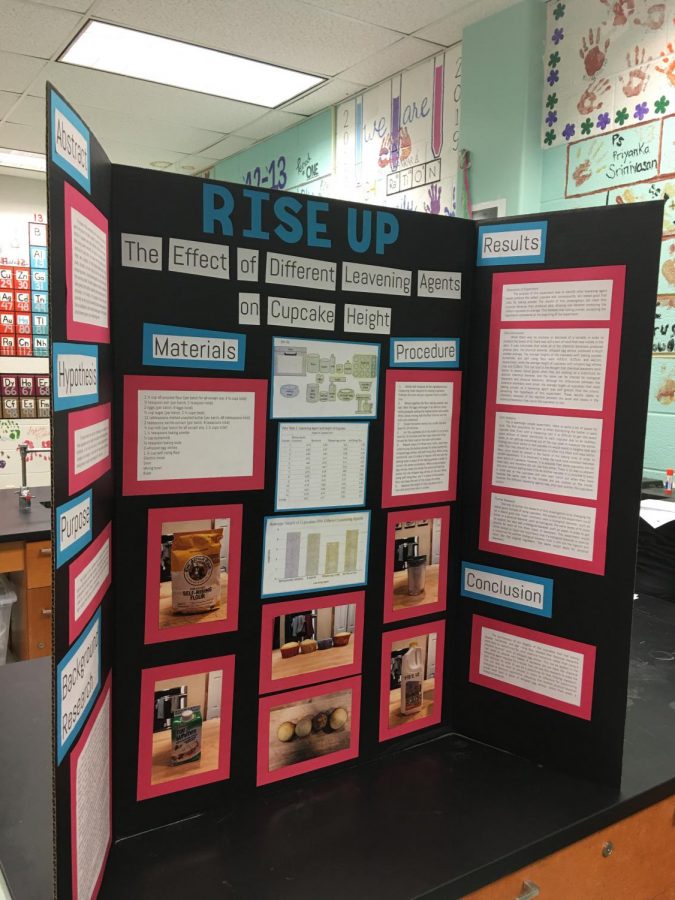Coffee stains and AI’s: the process behind Science Fair and ExploraVision
Many of these decorative tri-fold boards filled classrooms around the school as students presented their Science Fair projects to multiple judges. The projects will later be evaluated for awards.
February 12, 2020
With Science Fair and ExploraVision completed, freshmen and sophomores enrolled in honors science classes have been busy with research and creating presentations outside of school. Whether conducting an experiment and recording results or writing an essay on new technological ideas, both project categories introduce unique concepts that offer possible solutions to problems of the modern world. However, the two options are vastly different in terms of their requirements and completion procedures, leading many to question which one to choose.
With Science Fair, participating students conduct their experiments on their own time and log the data they collect, showing off their research at the school exhibition in late January. While many people choose to work with a partner for this project, freshman Sai Shriya Seenuthoju chose to work alone in her testing of different chemicals on coffee stains.
“I spill a lot of coffee on my clothes and I try to wash it, but it doesn’t work all the time,” Seenuthoju said. “I want to see which [chemical] is the best to use.”
There’s lots of freedom with what students choose to research and how they research it. However, Science Fair has many different regulations on all aspects of the project, from collecting the data to presenting the findings. These regulations can make the project seem strict to some.
“They make a big deal about everything,” freshman Wasim Shaaker said. “There’s so much we have to do.”
For those not interested in Science Fair, ExploraVision focuses on using currently applied science to improve technology that already exists and hypothesizing how a certain invention could be revolutionary through research. Instead of producing an experiment with results, students working on ExploraVision must work in groups to write up one research paper explaining their chosen technology and ideas on it. Sophomore Stuart Lunn and his three group members, for example, focused their research on artificial intelligence.
“It’s easier than having to go out and collect materials because that involves actually meeting up,” Lunn said.
The entire project is simply researching a topic and using sources to back up the facts in the paper. No experimenting or building is done unless a project progresses far enough through the competition.
In the end, both of these are science projects that make up 5% of a student’s final grade in their respective science class, and both can evolve from projects to competitions with prizes for proposals that stand out from others. The major differences are in the methods of collecting and displaying data. Both projects have procedures that attract people depending on their research interests, whether it be conducting experiments firsthand or gathering data to support ideas of technological advancement.
These projects have many steps that are required to complete them, and it’s important to be prepared for what’s needed as due dates roll around. Taking advice from people like Shaaker who have completed one is helpful in the long run to be successful with minimum stress.
“Don’t procrastinate and get your work done,” Shaaker said. “Your teacher will be satisfied, you will be satisfied, it will go great.”


